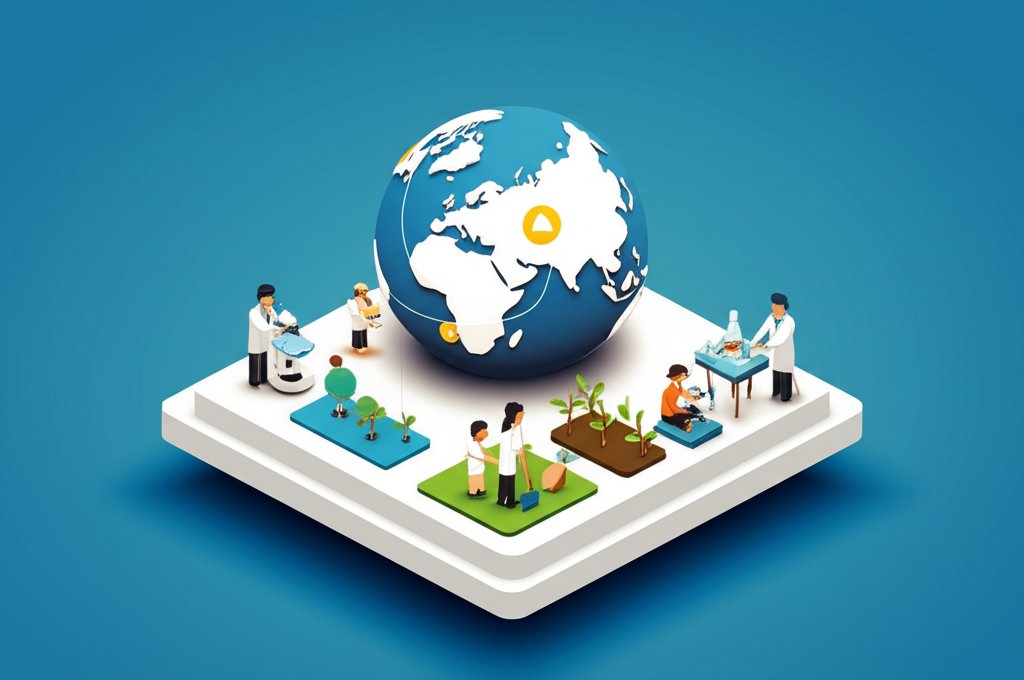Here’s a look at the detailed cluster article, focused on “bill gates charitable giving.”
markdown
Bill Gates’ ambition extended far beyond the realm of personal wealth. From the origins of Microsoft, explored in his new memoir, “Source Code: My Beginnings,” bill gates charitable giving has become a defining aspect of his legacy. Understanding how he approaches philanthropy offers valuable lessons for anyone looking to make a difference, regardless of scale.
At a glance:
- Discover the core principles driving Bill Gates’ philanthropic strategy.
- Learn about the Bill & Melinda Gates Foundation’s key focus areas and impact.
- Understand how data and measurable outcomes shape their grantmaking decisions.
- Explore the criticism and controversies surrounding their approach and Gates’ responses.
- Identify actionable takeaways for your own charitable giving, inspired by Gates’ approach.
From Tech Titan to Philanthropic Force: The Genesis of a Giving Strategy
Bill Gates’ journey into philanthropy wasn’t a sudden pivot but a gradual evolution. His early focus, detailed in Read Bill Gates’ Early Life, laid the groundwork for a data-driven, problem-solving mindset that would later define his charitable endeavors. The experience of building Microsoft instilled a belief in the power of innovation and technology to tackle complex challenges, a belief that permeates his philanthropic work.
The initial spark for significant giving came from conversations with his wife, Melinda French Gates, and influences like Warren Buffett. They envisioned not just giving away money, but strategically investing in solutions that could have a lasting impact on global issues.
The Bill & Melinda Gates Foundation: A Global Force for Good

Established in 2000, the Bill & Melinda Gates Foundation is one of the largest private charitable foundations in the world. Its mission is to improve lives and reduce inequality globally. It focuses on a range of critical areas, including:
- Global Health: Combating infectious diseases like HIV/AIDS, malaria, and polio. This includes funding research and development of new vaccines and treatments, as well as strengthening healthcare systems in developing countries.
- Global Development: Addressing poverty and hunger through agricultural development, financial services for the poor, and sanitation improvements. The focus is on empowering individuals and communities to lift themselves out of poverty.
- US Education: Improving educational outcomes for all students, particularly those from low-income backgrounds. This involves supporting innovative teaching methods, improving teacher quality, and expanding access to college.
- Global Policy & Advocacy: Shaping policies and influencing decision-makers to support development and ensure equitable access to resources.
The Foundation’s approach is characterized by a rigorous commitment to data and evidence-based decision-making. They invest heavily in research to understand the root causes of problems and to identify the most effective solutions.
Data-Driven Philanthropy: Measuring Impact and Maximizing Results
A hallmark of Bill Gates’ philanthropy is his relentless focus on measurable outcomes. Just as he tracked key performance indicators (KPIs) at Microsoft, he applies a similar approach to charitable giving. The Foundation emphasizes rigorous evaluation and data analysis to assess the impact of its grants and programs.
This data-driven approach involves:
- Setting clear goals and objectives: Defining specific, measurable, achievable, relevant, and time-bound (SMART) goals for each initiative.
- Collecting and analyzing data: Tracking key indicators to monitor progress and identify areas for improvement.
- Conducting rigorous evaluations: Assessing the effectiveness of programs using randomized controlled trials (RCTs) and other rigorous methods.
- Sharing results openly: Publishing evaluation reports and data sets to promote transparency and accountability.
Example: In the fight against polio, the Gates Foundation invests in surveillance systems to track the spread of the virus, funds vaccination campaigns to immunize children, and supports research to develop new and more effective vaccines. The progress is measured by tracking the number of polio cases worldwide, with the ultimate goal of eradicating the disease completely.
This dedication to data allows the Foundation to adapt its strategies and allocate resources more effectively. If a particular intervention isn’t producing the desired results, they are willing to change course and try something new.
Criticism and Controversies: Addressing the Skepticism
Bill Gates’s philanthropic efforts have not been without controversy. Some critics argue that the Foundation’s influence can be disproportionate, potentially shaping global health and development agendas in ways that may not always align with the priorities of local communities. Concerns have also been raised about the potential for conflicts of interest, given Gates’s investments in various industries. For example, his support for genetically modified crops has drawn criticism from some environmental groups.
Gates has addressed these concerns by emphasizing the importance of transparency and collaboration. The Foundation actively seeks input from local communities and partners with governments, NGOs, and other organizations to ensure that their work is aligned with local needs and priorities. They also publish detailed information about their grants and investments, allowing the public to scrutinize their activities.
Practical Playbook: Lessons from Gates for Effective Giving

While the scale of the Gates Foundation’s operations is vast, individuals can apply similar principles to their own charitable giving:
- Identify a Cause You Care About: Start by identifying a cause that resonates with you personally. What issues are you passionate about? What problems do you want to help solve?
- Do Your Research: Before donating to any organization, take the time to research its mission, programs, and financial performance. Look for organizations that are transparent, accountable, and effective.
- Focus on Impact: Don’t just give money; invest in solutions. Look for organizations that are using data and evidence to measure their impact and demonstrate their effectiveness.
- Give Regularly: Consider setting up a recurring donation to provide consistent support to your chosen cause.
- Volunteer Your Time: In addition to giving money, consider volunteering your time and skills to support a cause you care about.
- Advocate for Change: Use your voice to advocate for policies and programs that support your chosen cause.
Decision Tree: Choosing a Charity
- Does the charity align with my values? (Yes/No)
- Yes: Continue to the next question.
- No: Find another charity.
- Is the charity transparent and accountable? (Yes/No)
- Yes: Continue to the next question.
- No: Proceed with caution; look for red flags (lack of financial transparency, unclear goals).
- Does the charity demonstrate impact? (Yes/No)
- Yes: Strong candidate for donation.
- No: Consider smaller test donation before committing further.
Quick Answers: Addressing Common Questions about Large-Scale Philanthropy
Q: Is large-scale philanthropy truly effective, or does it just create dependency?
A: It’s a valid concern. Effective philanthropy focuses on long-term solutions that empower individuals and communities to become self-sufficient. The Gates Foundation emphasizes initiatives that strengthen local institutions and promote sustainable development, rather than simply providing handouts.
Q: How can I be sure that my donation is actually making a difference?
A: Research the charity thoroughly. Look for evidence of impact, such as measurable outcomes and independent evaluations. Charity Navigator and GuideStar are good resources for evaluating nonprofits.
Q: Is it better to give to a large, established organization or a smaller, local one?
A: Both can be effective. Large organizations often have the resources and expertise to tackle complex problems on a global scale. Smaller, local organizations may be more nimble and responsive to local needs. Consider your own priorities and preferences when making your decision.
Q: What’s the role of government in addressing social problems, compared to private philanthropy?
A: Both play crucial roles. Governments have the responsibility to provide essential services and ensure equal opportunities for all citizens. Private philanthropy can complement government efforts by funding innovative approaches, supporting pilot projects, and advocating for policy changes.
Actionable Close: Empowering Your Own Giving Journey
Bill Gates’ journey, chronicled partially in his memoir, and continuing today, reveals that bill gates charitable giving is not just about writing checks; it’s about applying strategic thinking, data-driven decision-making, and a deep commitment to solving some of the world’s most pressing problems. By adopting similar principles in your own giving, you can maximize your impact and contribute to a more just and equitable world. Start small, stay informed, and focus on making a difference, one step at a time.










